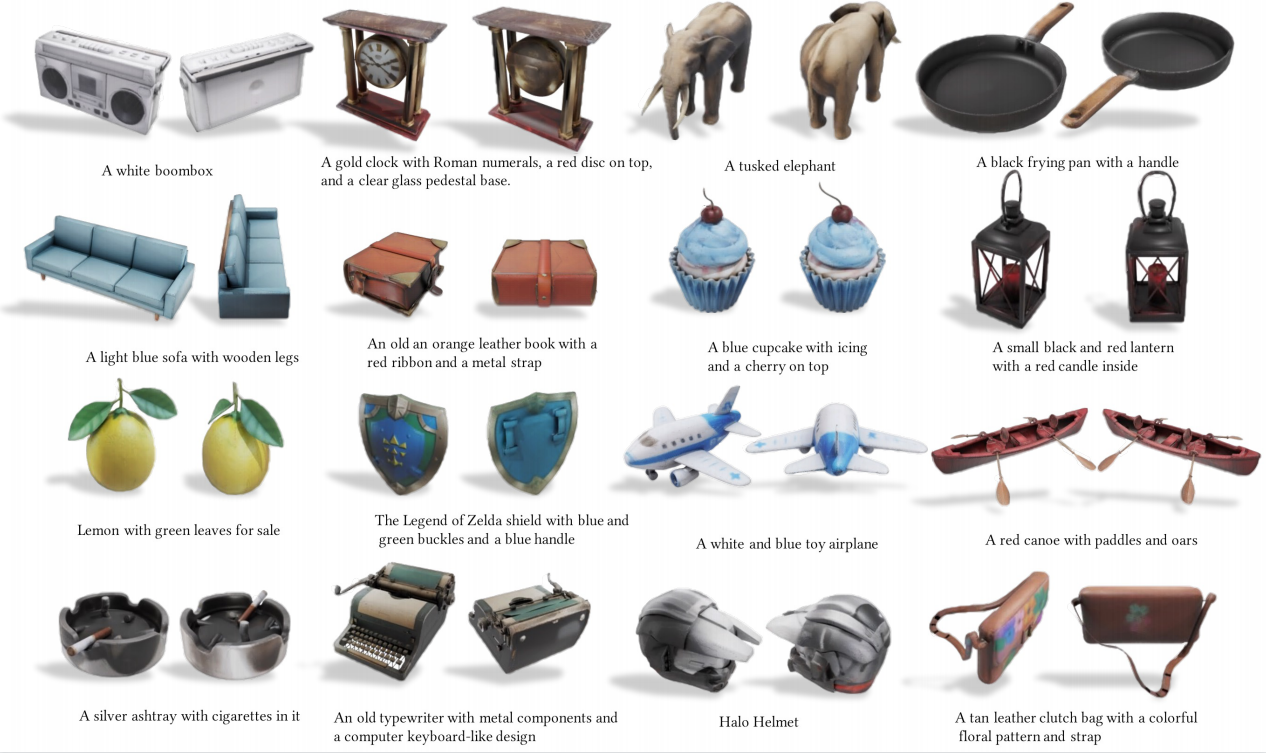Abstract
This paper presents TexRO, a novel method for generating delicate textures of a known 3D mesh by optimizing its UV texture. The key contributions are two-fold. We propose an optimal viewpoint selection strategy, that finds the most miniature set of viewpoints covering all the faces of a mesh. Our viewpoint selection strategy guarantees the completeness of a generated result. We propose a recursive optimization pipeline that optimizes a UV texture at increasing resolutions, with an adaptive denoising method that re-uses existing textures for new texture generation. Through extensive experimentation, we demonstrate the superior performance of TexRO in terms of texture quality, detail preservation, visual consistency, and, notably runtime speed, outperforming other current methods. The broad applicability of TexRO is further confirmed through its successful use on diverse 3D models.
Pipeline

Results

Conclusion
We introduce TexRO, a novel method for generating realistic textures on 3D geometries. The key innovations lie in the proposed recursive optimization pipeline and the optimal view selection strategy. The recursive optimization utilizes an interlaced denoising strategy that leverages the advancements in diffusion probabilistic models to synthesize textures at increasing resolutions. This facilitates it to first generate consistent structures, and then enhance details of textures. Through rigorous experimentation and user studies, TexRO has proven to significantly surpass existing methods in delivering superior texture quality, remarkable detail preservation, enhanced visual consistency, and improved runtime efficiency, applicable across various 3D models.